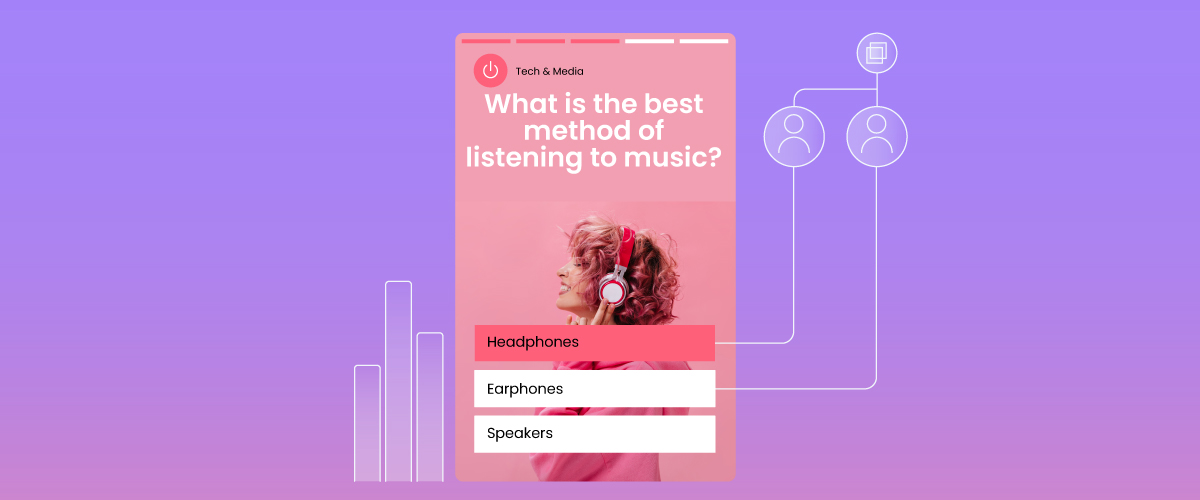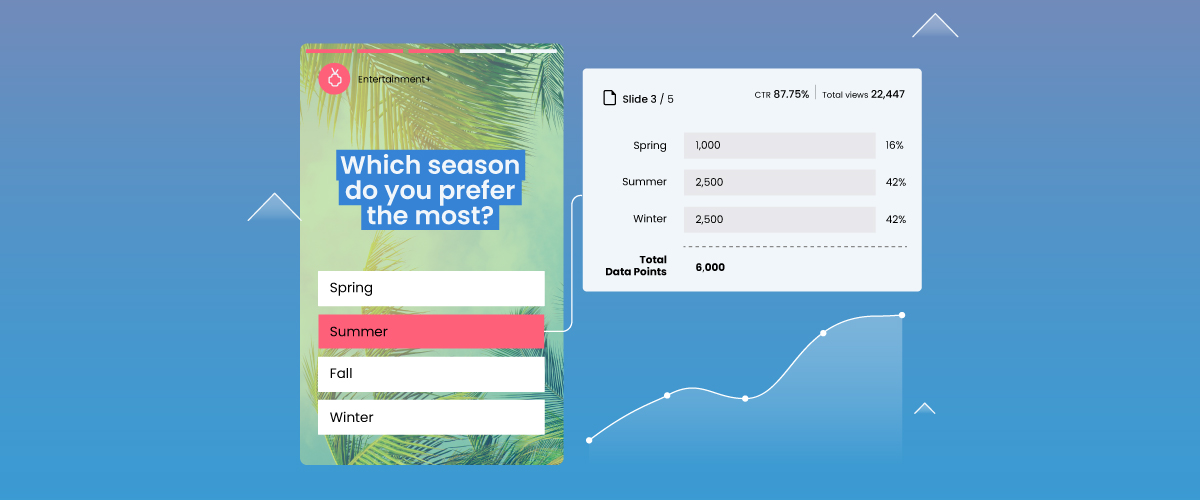Original article can be found here: Inpublishing Article.
Q: What steps can publishers take to improve time spent on site?
A: Publishers face huge competition for consumer attention, given the wealth of platforms and the constant distractions from both real and virtual worlds. Shorter attention spans mean publishers have to work a lot harder to grab and then keep the attention of their users, so those publishers need to look at ways to make their sites and content exciting, engaging and interactive.
A good way to get a user to stay on site for longer is to invite them to interact with the content itself and become a part of the story. That can be achieved with engagement tools like polls, quizzes, surveys and interactive stories. Introducing games and puzzles can also do wonders for time on site – we have recently seen a brilliant example of a publisher taking on this strategy with The New York Times’ purchase of Wordle.
Another strategy is to keep users on site for longer by covering more of their interests and giving them a selection of content formats. Publishers should think about having both long reads and concise re-caps, recommendations of products, books, schools, restaurants, advice on personal finance, reviews, comparisons and so on, covering a wide range of interests. It is also important to navigate them to these sections and nudge them to read more with personalised recommendations. Doing all this effectively helps grow engagement and loyalty.
Q: How should they develop their content strategy to appeal to younger audiences?
A: Younger audiences have grown up in a completely different environment to their older counterparts, surrounded by social media, constantly switching between contexts, platforms and apps and absorbing new technology. In this group, there is an issue of attention fragmentation – younger people consume information differently, often preferring video and audio content. They rely on their mobile phones and pick up a lot of their knowledge in walled-garden environments. They are also very used to sharing content and being able to provide instant feedback with likes, comments and buttons that signal when they do not find content exciting.
Publishers need to present a variety of content formats, including videos, audios and interactive features. It’s also worth making sure that content easily translates across platforms – your site’s stories should feed into social media platforms, giving younger audiences a familiar format and ability to explore your brand within the environment of their choice.
Q: When it comes to content, there’s a constant battle between the editorial and revenue teams. Can their differing needs both be met?
A: While they share the overarching goal of running a successful publishing business, it is true that editorial and commercial teams’ interests don’t often naturally align. All the same, both understand that engagement sits at the heart of any successful publishing business. Editorial content that matches readers’ interests, makes them loyal and encourages repeat visits, directly feeds into greater success and commercial opportunity, whether it is from reader or advertising revenue.
Publishers need to seek technology partners that can introduce innovation that hits the spot with multiple departments, driving objectives across the business. Innovation has to bring value to editorial, commercial, audience, data and product teams, and publishers should choose providers that can deliver cross-team results, from growing engagement and revenues to delivering reader insights and attracting new audiences.
Balance between commercial and editorial teams is also easier to achieve with a diversified business model, in which revenues are generated across the board and are not dependent purely on the traditional forms of advertising.
Q: We hear a lot of talk about the need for publishers to focus on acquiring richer user data. What actions should they be taking to achieve this?
A: We live in a privacy-centric world, and as cookies crumble and multiple regulations come into force, every publisher’s priority must be to collect, store and use first- and zero-party data in a privacy-friendly way. Data is critical for any attention-based business model, and publishers need to set up the infrastructure and processes to allow them to understand who their users are.
Registration gates, newsletter sign-ups, sweepstakes and prize draws are all perfect for gathering additional zero-party data to enhance publishers’ audience profile. Polls, quizzes and surveys can aid them in learning more about users’ likes, interests and preferences, which in turn can drive editorial decisions, strengthen engagement and grow loyalty. Having a well-structured and solid data strategy can fundamentally increase publishers’ revenue opportunities and business success, and help them adapt to the ever-changing digital media landscape.
More and more solutions focused on helping publishers deliver targeted and attributable advertising are becoming available, but they all rely on robust, stable first-party data, making data strategy an essential pillar for any publishing business.
Q: Looking ahead to 2023, what are the critical publisher challenges and opportunities?
A: Today’s challenging economic conditions are impacting businesses across all industries, and publishers specifically are impacted by declines in advertising revenues. Situations like these always push marketers to turn to performance-based advertising, and publishers need to diversify their business model and focus on performance-based sponsored, affiliate, ecommerce and lead-gen content.
Publishers also are often faced with new competition. While they always had to compete against each other, social media has added a challenging layer to the ecosystem that never stops evolving, with new formats and platforms bubbling up all the time. Social platforms like TikTok and audio formats like podcasts have truly taken off in just the last few years – and keeping up to date and adapting your business to maintain user attention remains a continuous struggle.
Q: What’s in the pipeline for Apester?
A: 2022 has been a big year for us. We’ve developed our offering, so it’s now 60% lighter on the page, which benefits publishers. We’ve also improved our proprietary algorithm to maximise publisher revenues, with some experiencing up to 125% increases, without compromising site values and engagement.
We’re continuing to integrate with more ID solutions and DMPs to help our publishers engage with third parties and enhance the value of their data. We’ve got big product improvement plans for 2023, including an updated content discovery engine with an enhanced algorithm and targeting capabilities, to support publishers with their content recirculation – which ultimately ties back to improving engagement and time on site.
About us
Apester is an interactive experience platform that allows publishers, brands and creators to engage and understand customers across digital media channels, driving lead generation, brand uplift, conversions and sales.
Our code-free tech allows any user to create audience-pleasing experiences in minutes – from web stories to videos to surveys – and distribute them across multiple digital media channels.
Apester’s DMP integrations also enable the privacy-compliant collection and storage of zero-party and first-party engagement data generated from its experiences and applications.
We operate from New York, London, Berlin and Tel Aviv and are trusted by publishers around the world including ESI Media, Reedpop, NME Networks, GoFeminin, Trusted Reviews, RTL Interactive, Global Gaming and Kicker.







